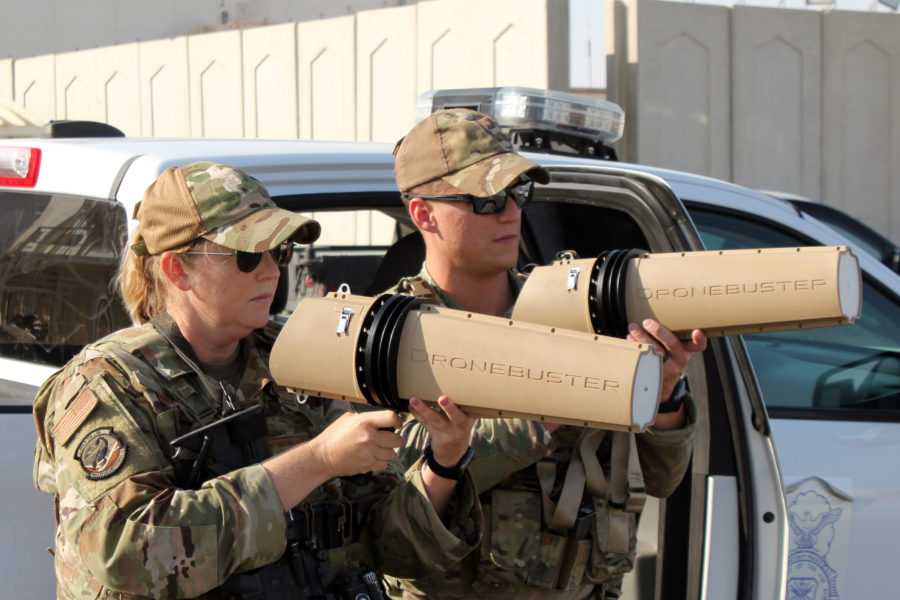U.S. Central Command is making progress tying together air, missile, and drone defenses—but there’s still more to be done to achieve “single-pane-of-glass” integration, officials say.
Fully integrating sensors and defenses will demand further innovations, both in integrating new technologies and repurposing existing ones, said CENTCOM Deputy Commander Lt. Gen. Gregory M. Guillot in a virtual discussion Jan. 17 hosted by the Missile Defense Advocacy Alliance.
“What I focus on … is advocating for a layered, integrated air and missile defense capability, from the upper tier all the way down to counter-small UAS—a quadcopter flying 50 to 100 feet off the ground at 10 or 20 miles an hour—and everything in between,” Guillot said.
Air Forces Central commander Lt. Gen. Alexus G. Grynkewich is responsible for ballistic missile defense and manned air defense in the CENTCOM region, Guillot noted. Individual base commanders are responsible for smaller drones, and Grynkewich and base commanders share responsibility for larger drones.
With so many commanders tasked with tracking airborne threats, the goal has been to unite and share data, Guillot said.
“The way we look to that … is to bring all these different systems that give a commander situational awareness in the missile defense area onto a single pane of glass,” Guillot explained. “And we’re not there yet. We used to be in three or four, maybe five or more buildings on a base with different systems separated. We now have all of the systems in one room—now sometimes it’s on five or six different screens—but all the feeds are at least coming into one room so that the commander can make timely decisions.
“We’re working to innovate to get it all into one pane of glass [on which] everybody can share all their information.”
Innovation has become a focus for CENTCOM leaders, driven by commander Gen. Michael “Erik” Kurilla and a need to do more with less, given that U.S. military strategy and resources have shifted away from the region. And while that push has included experimentation with low-cost drones through the Air Force’s Task Force 99, it’s also required responses to counter Iranian-backed militias, which have launched attacks using explosives strapped to low-cost commercial drones.
“If you’ve got an Amazon card and access to a hand grenade, you’ve now got an over-the-horizon weapon capability,” said Rear Adm. Curt Renshaw, director of operations for CENTCOM.
Guillot said such weapons pose a “daily threat.” In September, a USAF F-15 shot down an Iranian drone believed to be a threat to U.S. forces in Iraq.
Moving forward, Guillot said, the goal is to ensure commanders have the time and options needed to match their response to the threat.
“I think I would always want more sensing—not necessarily better sensing, and I wouldn’t say that it’s a vulnerability in any way. We have a lot a lot of good sensors,” Guillot said. “But the earlier and the further out you can sense anything gives you more time and more decision space to find the right asset to shoot it down, whether it’s an air-to-air fighter, all the way down to a kinetic or a non-kinetic capability at a base.”
Specifically for the counter-UAS mission, officials are trying to increase sensing by using systems already in the region.
“We’re looking at how do you tune radars to see smaller, slower? And how do you tune these systems to get after the smaller radar cross section type of capabilities at further distances?” said Army Maj. Gen. Sean A. Gainey, director of the Joint C-UAS Office.
More sensing will also come from tying more sensors together to present a unified view to commanders, Guillot said.
“We’re doing a really good job of tying everything from AWACS radars to ground-based radars to very small systems that are designed only for the counter-UAS roles, tying them all into that single pane of glass that I mentioned,” Guillot said.
CENTCOM has experimental technologies like microwave and directed energy weapons to counter UAS threats, and they are repurposing existing systems, such as the Counter-Rocket, Artillery, Mortar (C-RAM) Intercept.
With the push to innovate and expand capabilities, CENTCOM is helping to lead the way on a new approach to counter-UAS, Gainey said.
“You can’t look at this fight as a counter-UAS fight and as an integrated air and missile defense fight,” Gainey said. “You’ve got to look at it holistically as an integrated air and missile defense fight.”
